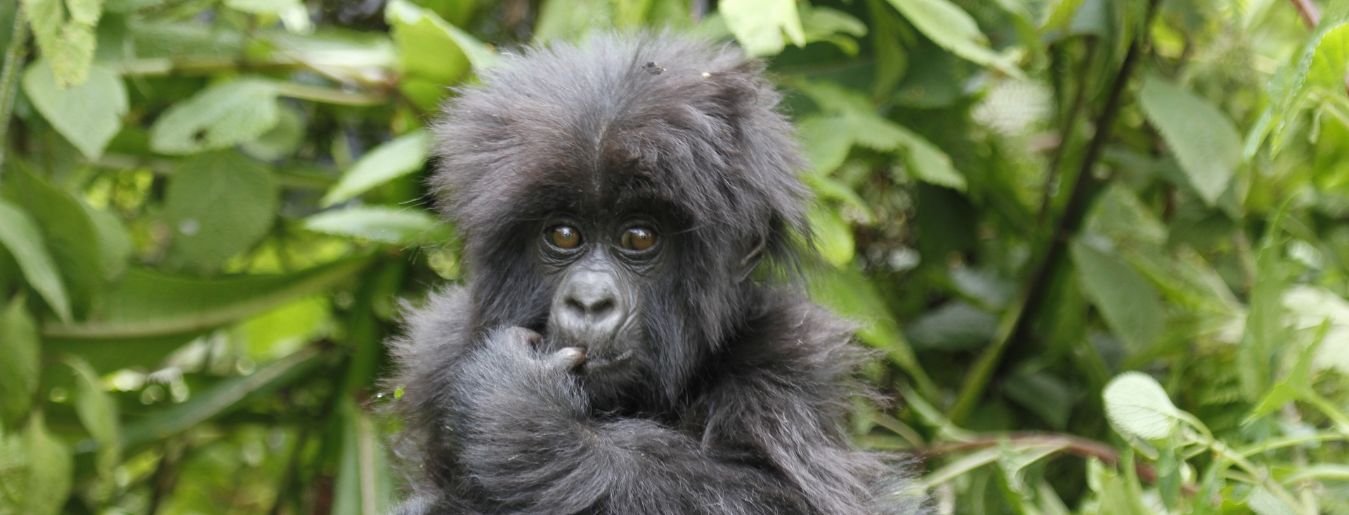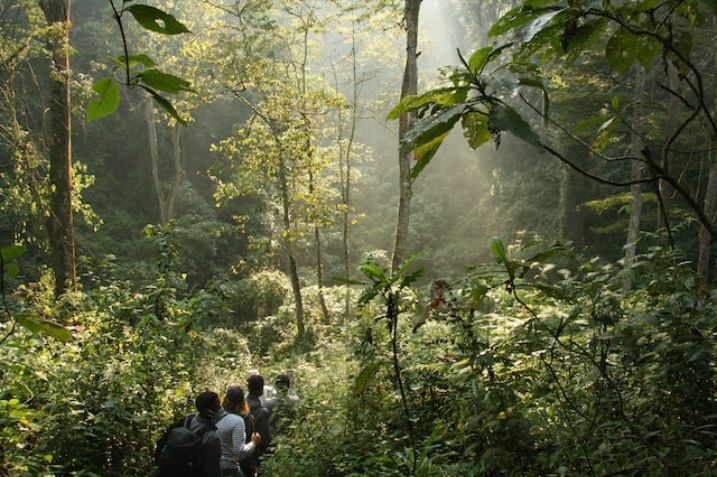
Activities in Bwindi National Park
1. Gorilla Tracking
Gorilla tracking in Bwindi National Park is a popular activity that involves trekking through the dense forest to observe the endangered mountain gorillas in their natural habitat.
Here’s how the gorilla tracking activity takes place in Bwindi National Park:
Booking: Visitors interested in gorilla tracking need to book permits in advance through the Uganda Wildlife Authority or a registered tour operator. Permits cost US$ 700, and each permit allows one person to track one gorilla family for one hour.
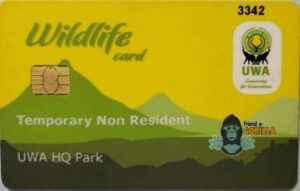

Briefing: The activity usually starts early in the morning, and visitors are required to arrive at the park headquarters for a briefing by the Uganda Wildlife Authority (UWA) rangers.
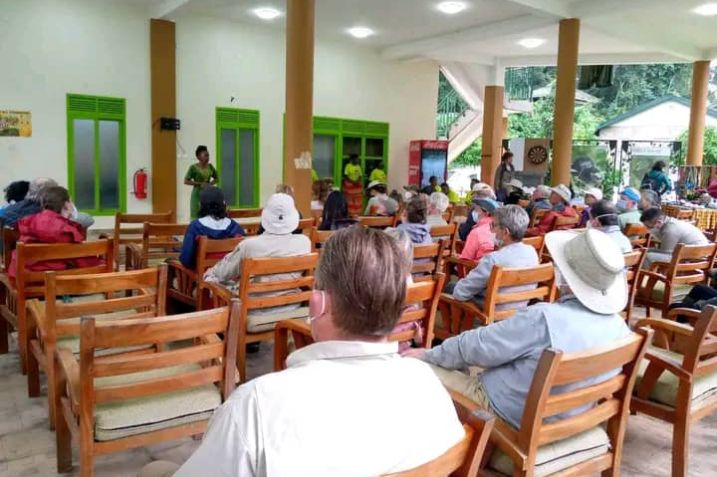
During the briefing, visitors are grouped into small groups of up to 8 people and assigned to a particular gorilla family or troop that has been habituated to human presence. Each group is assigned an experienced ranger guide who leads the trek through the dense forest to locate the gorillas. Visitors are given information about the gorilla families, the rules and regulations for tracking, and safety precautions.
Tracking: Visitors are divided into groups of eight and assigned a ranger guide. The guides lead the visitors on a trek through the forest to track the gorillas. The trek can take anywhere from 30 minutes to several hours, depending on the location of the gorilla family and the terrain of the park. The trek can be strenuous and requires a moderate level of fitness, as visitors may have to climb steep hills, navigate through dense vegetation, and cross streams.
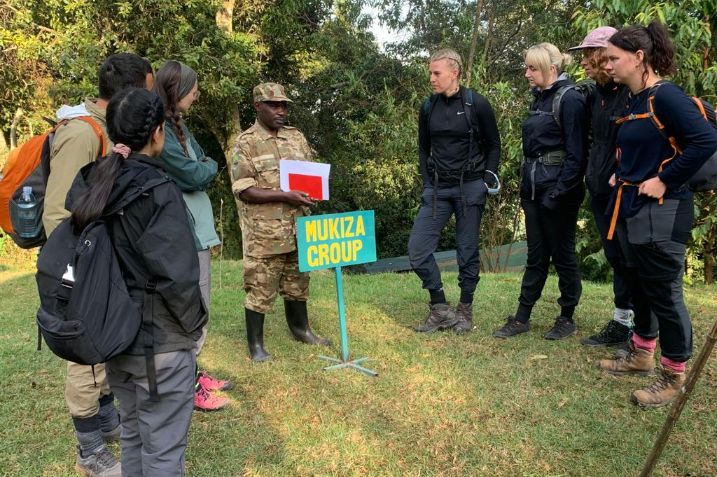
Gorilla observation: Once the gorilla family is located, visitors are allowed to spend one hour observing and photographing the gorillas. The rangers ensure that visitors keep a safe distance from the gorillas to minimize the risk of disease transmission.
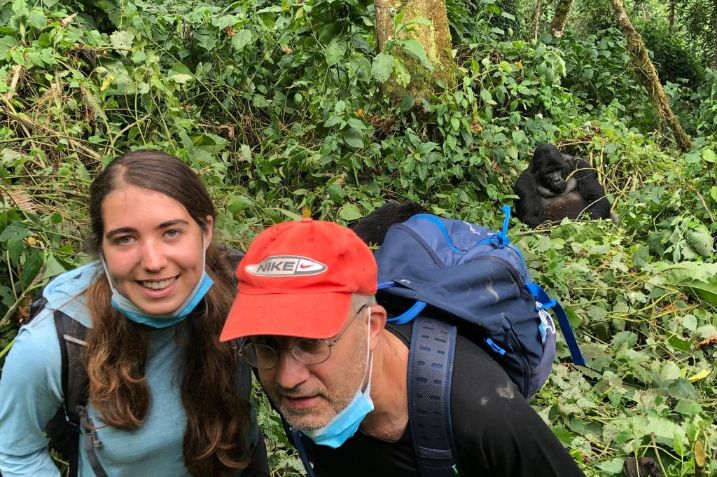
Return: After the one hour observation, visitors trek back to the park headquarters where they are awarded certificates of participation and can purchase souvenirs to support conservation efforts in the park.
Gorilla tracking is a strenuous activity that requires a reasonable level of fitness. Visitors are advised to wear appropriate clothing and footwear, carry plenty of water and snacks, and follow the instructions of the ranger guides at all times.
It is important to note that gorilla tracking permits are limited to a certain number per day, and visitors are advised to book in advance to secure their spot. Gorilla tracking is a highly regulated activity aimed at conserving the endangered mountain gorilla population, and visitors are required to follow the guidelines set by UWA to ensure the long-term sustainability of the activity.
2. Gorilla Habituation
Gorilla habituation is a process where a group of wild gorillas is gradually accustomed to the presence of humans, in preparation for gorilla trekking. This is done in order to make the gorillas more comfortable around people and to eventually allow them to be visited by tourists on a regular basis. Rushaga Sector in Bwindi Impenetrable National Park is one of the few places in Africa where visitors can participate in gorilla habituation.
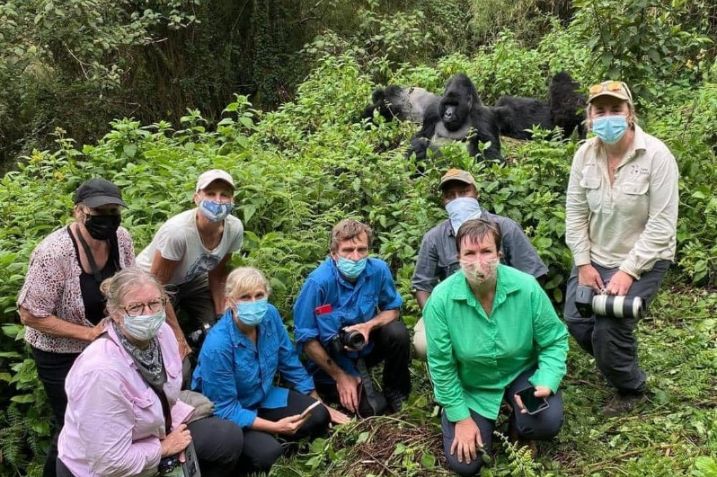
In Rushaga Sector, the gorilla habituation process is conducted by a team of expert researchers and rangers who have been trained to interact with the gorillas in a way that minimizes stress and disturbance to the animals.
Over time, the gorillas become used to the presence of humans, and the habituation process continues until the gorillas are fully habituated. This process can take up to two years or more, depending on the group of gorillas.
Gorilla habituation is a unique and unforgettable experience, allowing visitors to witness the process of habituating wild gorillas to human presence, while also contributing to their conservation. However, it is important to note that gorilla habituation is a sensitive process, and the number of visitors who can participate is limited to ensure the safety and well-being of the gorillas. Visitors are advised to book their gorilla habituation experience in advance and to follow all guidelines and regulations set by the park authorities.
3. Batwa Cultural visit:
The Batwa people are indigenous to the area around Bwindi National Park and have a rich cultural heritage that is worth exploring. A Batwa cultural visit in Bwindi National Park offers visitors the opportunity to learn about the Batwa’s traditional way of life, including their hunting and gathering techniques, music, dance, and storytelling.
During a Batwa cultural visit, visitors are taken to a Batwa community where they are greeted by Batwa guides who share their knowledge and experiences. Visitors may learn about traditional medicine and how plants are used for medicinal purposes, may have the chance to try traditional foods such as roasted plantains and beans, as well as how to start a fire using traditional methods.
Visitors can also learn about the Batwa’s hunting and gathering techniques and participate in traditional activities such as hunting with a bow and arrow or gathering honey from wild beehives. The Batwa also has a rich musical and dance culture, and visitors can enjoy traditional music and dance performances.
Storytelling is an important part of the Batwa culture, and visitors can hear stories about their history, legends, and myths. The Batwa guides are excellent storytellers and make the stories come to life.
The Batwa Trail is guided by Batwa community members, who share their knowledge and experiences with visitors. The trail is not only an opportunity to learn about the Batwa’s culture but also to support the Batwa community’s sustainable livelihoods. The Batwa Trail fees go directly to the Batwa community, supporting their development initiatives such as education, healthcare, and conservation projects.
Overall, the Batwa cultural visit is a unique and authentic experience that offers visitors the opportunity to learn about the Batwa people’s culture and way of life while supporting their sustainable livelihoods. Batwa cultural visit is done in all the 4 sectors of Bwindi National park, however it is done best in the Buhoma sector.
4. Birding in Bwindi
Birding in Bwindi National Park is a popular activity for bird enthusiasts from around the world. The park is home to over 350 species of birds, including many that are endemic to the region. The park’s diverse habitats, including forest, grassland, and swamp, support a wide range of bird species, including many that are endemic to the region.
Birding in Bwindi National Park can be done either on foot or by car, and there are several guided bird watching tours available. The park’s experienced guides can help visitors identify the different species and provide information about their behavior, habitats, and conservation status.
Some of the bird species that can be found in Bwindi National Park include the African Green Broadbill, Black Bee-eater, Blue-headed Sunbird, and the Handsome Francolin. Bwindi is also home to 24 of the 26 Albertine Rift endemics, which are bird species that are found only in the Albertine Rift region of East Africa.
Birding is best done in the early morning or late afternoon when the birds are most active and vocal. The birding experience in Bwindi National Park is unique, as the forested terrain and altitude create a variety of habitats that attract different bird species. Birders can explore the forest floor, canopy, and edges, as well as the rivers and streams that run through the park.
Birding in Bwindi National Park is not just about spotting different bird species, it’s also about immersing oneself in the park’s natural beauty and enjoying the peaceful sounds of the forest. The experience of spotting a rare or beautiful bird in its natural habitat can be a thrilling and unforgettable experience for birders of all levels.
Birding tours may involve hiking along forest trails, where visitors can spot birds in their natural habitat. Guides may use bird calls to attract birds, and will help visitors identify different species based on their plumage, behavior, and calls.
Visitors should wear comfortable walking shoes and bring binoculars and a bird guidebook. Bird watching can be combined with other activities such as gorilla tracking or nature walks, making for a rewarding and diverse wildlife experience in Bwindi National Park.
5. Hiking trails / Nature walks
Bwindi National Park offers a variety of walking trails and nature walks. These trails offer visitors the opportunity to explore the park’s natural beauty, and to experience the rich diversity of flora and fauna that the park has to offer.
Here are some of the popular trails and walks:
- Munyaga River Trail: This is a short and easy walk that takes visitors along the Munyaga River to the Munyaga waterfall. Along the way, visitors can spot a variety of bird species, as well as primates such as black-and-white colobus and red-tailed monkeys.
- Muzabajiro Loop Trail: This is a moderate hike that takes visitors through a variety of habitats, including bamboo forest and montane forest, with stunning views of the surrounding mountains. The trail offers the chance to see a variety of bird species, as well as primates and other wildlife.
- Rushura Hill Trail: This is a challenging hike that takes visitors to the top of Rushura Hill, offering panoramic views of the park and surrounding areas.
- Ivy River Trail: This is a longer trail that follows the Ivi River through the forest, offering the chance to spot a variety of bird species and other wildlife, including primates such as L’Hoest’s monkeys and black-and-white colobus monkeys.
- Buhoma-Nkuringo Trail: This is a challenging trail that takes visitors from the Buhoma area of the park to the Nkuringo area. The trail offers stunning views of the park’s landscape, as well as the chance to spot a variety of bird species and other wildlife.
Guides are available for all of these trails, and can provide visitors with information about the park’s flora and fauna, as well as its history and cultural significance. Walking trails in Bwindi National Park are a great way to experience the park’s natural beauty and to get a closer look at its rich diversity of wildlife, and enjoy the fresh air and peaceful surroundings.

